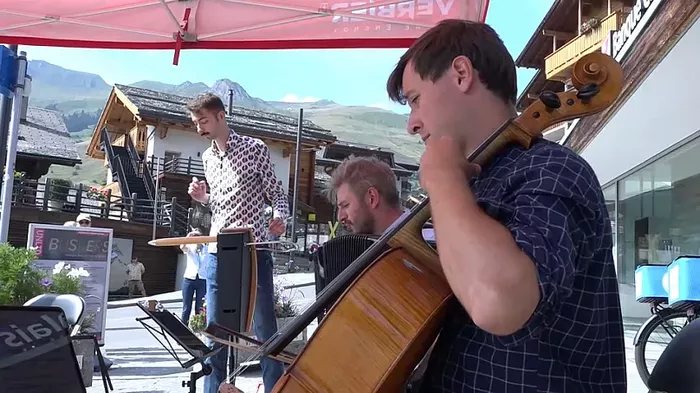Classical music has a rich history, immense cultural significance, and a profound impact on other music genres. Yet, it often finds itself sidelined by mainstream media. This article explores the reasons behind this neglect, examining factors such as commercial viability, audience demographics, and media trends.
I. Commercial Viability
Lack of Immediate Appeal
Classical music is often seen as complex and less accessible compared to popular music genres. It requires a certain level of familiarity and understanding to fully appreciate, which can deter casual listeners. In an age where instant gratification is paramount, classical music’s nuanced and intricate nature may not have the immediate appeal that mainstream audiences seek.
Marketing Challenges
Promoting classical music poses unique challenges. Record labels and media companies often focus on genres that promise quick and substantial returns on investment. Pop, rock, and hip-hop, for example, have a broader, more commercially viable audience. Classical music, on the other hand, typically attracts a niche market, making it a less attractive option for mass marketing campaigns.
Ticket Sales and Concert Attendance
Live classical music events face significant hurdles. Unlike pop concerts, which often draw massive crowds, classical performances tend to attract smaller, more specialized audiences. This affects ticket sales and overall profitability. As a result, media coverage of classical events is limited, further perpetuating the cycle of neglect.
II. Audience Demographics
Aging Audience
Classical music traditionally appeals to an older demographic. Studies have shown that a significant portion of classical music enthusiasts are in their senior years. This aging audience poses a challenge for media outlets aiming to capture younger, more dynamic markets. Consequently, classical music receives less media attention compared to genres that resonate with younger listeners.
Educational Exposure
The level of exposure to classical music in educational settings has declined over the years. Music education programs, once a staple in schools, have seen budget cuts and reduced emphasis. This decline in early exposure results in fewer young people developing an appreciation for classical music. As a result, media outlets, driven by audience interests, allocate less space to classical music coverage.
Cultural Perception
Classical music is often perceived as elitist or highbrow, creating a barrier for potential new listeners. This perception can deter individuals who may feel that classical music is inaccessible or irrelevant to their lives. Media representations that reinforce these stereotypes further alienate potential audiences, perpetuating the cycle of neglect.
III. Media Trends
Pop Culture Dominance
The media landscape is heavily influenced by pop culture. Television shows, movies, and social media platforms predominantly feature popular music genres, reinforcing their dominance. Classical music, with its more formal and less mainstream appeal, struggles to find a place in this environment. The pervasive presence of pop culture content leaves little room for classical music to gain traction.
Digital Media and Streaming
The rise of digital media and streaming services has revolutionized the music industry. However, classical music faces unique challenges in this digital age. Algorithms and recommendation systems on platforms like Spotify and Apple Music often prioritize popular genres based on user preferences and listening habits. Classical music, with its longer compositions and less frequent streams, is less likely to be recommended to users, further diminishing its visibility.
Media Fragmentation
The fragmentation of media consumption has also impacted classical music’s presence. With an abundance of channels and platforms catering to specific interests, audiences are increasingly segmented. Classical music enthusiasts may turn to specialized channels, but these are often overshadowed by mainstream outlets. This fragmentation dilutes the overall visibility of classical music in the broader media landscape.
IV. Efforts to Revitalize Classical Music
Innovative Marketing Strategies
To combat these challenges, classical music organizations are adopting innovative marketing strategies. Social media campaigns, collaborations with popular artists, and immersive concert experiences aim to attract a younger audience. By leveraging modern marketing techniques, classical music seeks to bridge the gap between tradition and contemporary appeal.
Educational Initiatives
Revitalizing music education is crucial for fostering an appreciation of classical music among younger generations. Organizations and institutions are advocating for the reintegration of music programs in schools. By exposing students to classical music from an early age, these initiatives aim to cultivate a lifelong interest and appreciation.
Cross-Genre Collaborations
Collaborations between classical musicians and artists from other genres have gained popularity. These partnerships introduce classical music to new audiences and create innovative, hybrid compositions. By blending classical elements with contemporary styles, these collaborations make classical music more accessible and appealing to a broader audience.
Reaching Younger Generations
Strategies for making classical music more appealing to younger audiences. Discussing the role of social media, digital platforms, and educational initiatives in this effort. Addressing the importance of diversity in classical music. Highlighting efforts to include underrepresented groups and cultures within the classical music community.
The Role of Streaming Services & Technological Innovations
Examining how streaming platforms are impacting classical music consumption. Discussing the advantages and challenges of digital distribution for classical music. Exploring how technology is being used to enhance the classical music experience. Discussing virtual reality concerts, interactive music apps, and other innovations.
See Also: 6 Classical Music Pieces Inspired by Swans: All You Want to Know
V. Conclusion
Classical music’s marginalization in the media is a complex issue, influenced by commercial viability, audience demographics, and media trends. While the challenges are significant, efforts to innovate marketing strategies, revitalize education, and foster cross-genre collaborations offer hope for a more prominent future. By addressing these factors, classical music can reclaim its rightful place in the media landscape and continue to enrich our cultural heritage.

